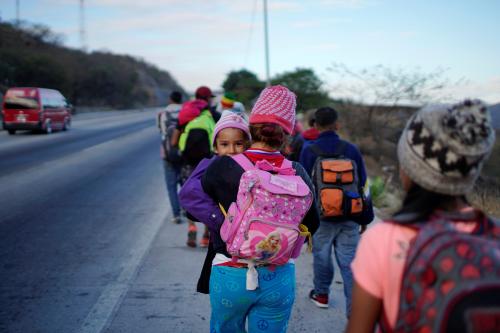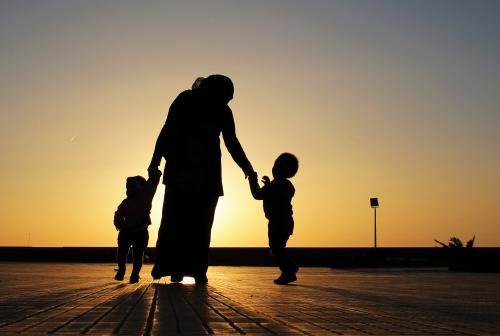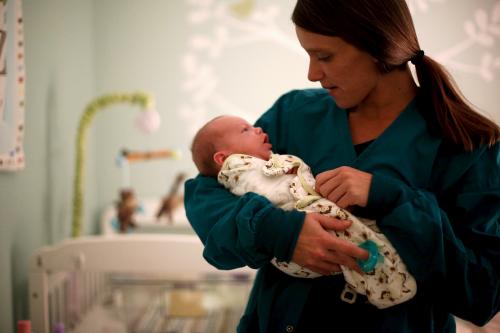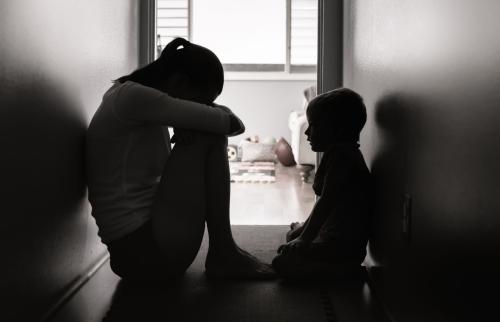This article was originally published on February 11th, 2020, by the Institute for Family Studies.
It’s embarrassing to admit, since I work in a Center on Children and Families, but I had never really thought about the word “relative” until I read the new Atlantic essay from David Brooks, “The Nuclear Family Was a Mistake.”
In everyday language, relatives are just the people you are related to. But what does that mean? Sometimes, we prefix the term to make it clearer still, referring to blood relatives, as opposed to those, say, to whom we are “related” through marriage. The in-laws are relatives, too. So the question is: what relationships make a relative?
Scholars working in this field usually start with a social structure like “the family,” and then study the relationships within them. Marriages and parent-child relationships are the most obvious examples here.
Brooks turns this approach on its head. He starts with relationships and then examines the circumstances in which they form and flourish. By assessing the history of the family through a relational rather than a structural lens, he breaks free of some of the fetters that cramp many contemporary debates on the family.
Rather than obsessing over specific structures—in particular the “traditional nuclear family” which, as he points out, is rather a modern invention—we should instead focus on our relational life. Specifically, we can look at the quality and quantity of our relationships.
Relationship Quality
In “Family is Family,” Kacey Musgraves sings:
Family is family, in church or in prison/You get what you get, and you don’t get to pick ’em/ They might smoke like chimneys, but give you their kidneys/ Yeah, friends come in handy, but family is family.
But, as Brooks points out, the quality of family relationships is far from guaranteed. All of us know plenty of blood relationships that have been sour, or even abusive. “Chosen” families may provide better, more committed, more loving relationships; friends may often be much more than handy. We can form close ties between us that go beyond blood, that are closer to the idea of a clan than a family. The echo of this kind of relationship is in the description of someone as a “kindred spirit.”
The idea of a “chosen” family is consistent with the development of modern liberalism, in which relationships are contingent rather than coerced. There is no legal requirement, for example, for children to take care of their parents (only the other way round). We can, then, create “fictive kin,” and create our own families.
Relational pluralism is visible in the language used by those drafting policies or legislation for family leave. In the Healthy Families Act (H.R. 1516) Section 5 b) 3, for example, paid sick leave would cover “an absence for the purpose of caring for a child, a parent, a spouse, a domestic partner, or any other individual related by blood or affinity whose close association with the employee is the equivalent of a family relationship” (my italics). There are similar phrases in law and corporate policies across the land.
The definition here of who counts as “family” relies on a certain relational quality that is seen as the “equivalent” of a family relationship without therefore being restricted to it. While the language can become tortuous here, the intent is correct—to allow people to define family for themselves. This does not mean that most people are going to abandon their blood family and join a Californian commune of some kind. Liberal societies don’t result in a mass exodus from family responsibilities. It turns out that the overwhelming majority of people do, in fact, feel close or at least committed to the other members of their family and don’t need to be forced into family.
Relationship Quantity
Brooks also applies an important quantitative test to relational life. The question is not just how good our relationships are, but how plentiful. This is why he argues in favor of the extended family, as opposed to the “detached” or “decentralized” nuclear version. You can’t have an extended family without plenty of extensions. As Brooks writes:
An extended family is one or more families in a supporting web. Your spouse and children come first, but there are also cousins, in-laws, grandparents—a complex web of relationships among, say, seven, 10, or 20 people. If a mother dies, siblings, uncles, aunts, and grandparents are there to step in. If a relationship between a father and a child ruptures, others can fill the breach. Extended families have more people to share the unexpected burdens—when a kid gets sick in the middle of the day or when an adult unexpectedly loses a job. A detached nuclear family, by contrast, is an intense set of relationships among, say, four people. If one relationship breaks, there are no shock absorbers.
Again, what counts here is not the specific structures but the extent to which they are connected to one another. In an extended family, boundaries are porous. One of the two main advantages of a porous, connected, extended family, according to Brooks, is social insurance—the “shock absorber.” This seems right. Witness the number of children being raised by grandparents as a result of the opioid epidemic.
Brooks argues that a series of changes—more geographical mobility, larger and more comfortable houses, mothers being at work rather than at home—have hardened the boundaries between families, whether neighbors or kin. (It is worth noting, however, that rates of geographical mobility have fallen sharply in the last couple of decades—which suggests the web may be less stretched than in the past).
The second major advantage is to share the work of socializing children. If it “takes a village” to raise a child, we probably should not leave it to one or two parents. Here socialization is seen as a shared, diffused responsibility rather than a narrow, privatized one. Again, this seems right: the privatization of childrearing puts huge pressure on parents. In this sense, we need socialization of the means of reproduction.
An important implication of the relational frame is that this is partly a simple numbers game. This is a case where, everything else equal, more is just better. More people equal many more relationships. But as Brooks points out, the proportion of households with five or more people has halved since 1970 (from 20% to 10%).
It is striking that he opens the essay with a reference to Barry Levinson’s movie Avalon, featuring the stories of five siblings. By today’s standards, that is a big family. It is a feature of networks that the number of relationships rises exponentially with the addition of more nodes. In a group of three people (say, two parents and a single child) there are just three relationships. In a group of four, there are six, five has 10, and so on. Even the two-generation nuclear version of the Levinson (two parents, five kids) contained 21 relationships.
One of the fears of some sociologists is that as families shrink, older people will get lonelier, simply because they will have fewer children or grandchildren. Brad Wilcox has highlighted the plight of older men and women without family, a group the Chinese have labeled “bare branches.”
Again, the numbers matter a lot. If you have three children who each have three children, you’ll end up (if they all survive) with 12 offspring across the two generations. But if you have one, who has one, well, you’ll have just two. In some ways, this all seems so obvious, it scarcely seems worth saying. But if Brooks is right that what matters is not only the quality but the sheer quantity of our supportive relationships, the math starts to matter a lot.
If it’s true that the quality and quantity of our relationships are what really matter—and I think Brooks is right to suggest this—the challenge for all of us is to create a culture where relationships of all kinds have the time, spaces, and resources to form and deepen.





Commentary
David Brooks is correct: Both the quality and quantity of our relationships matter
February 12, 2020